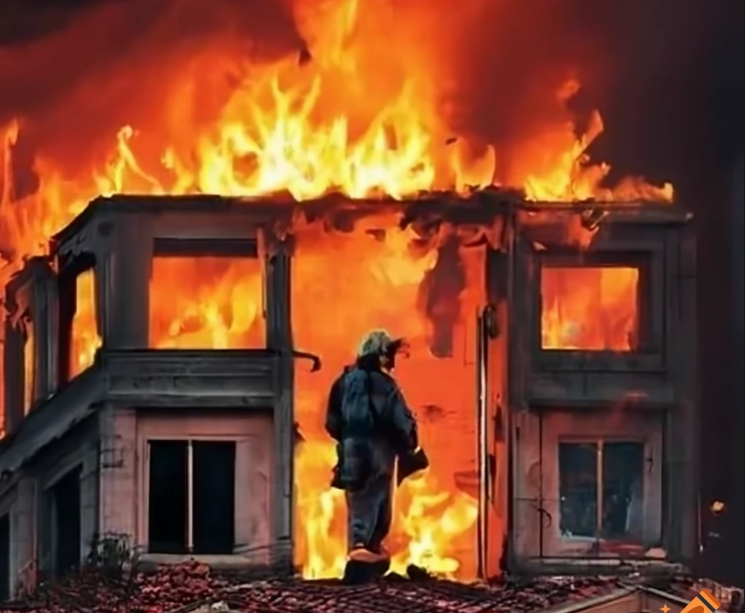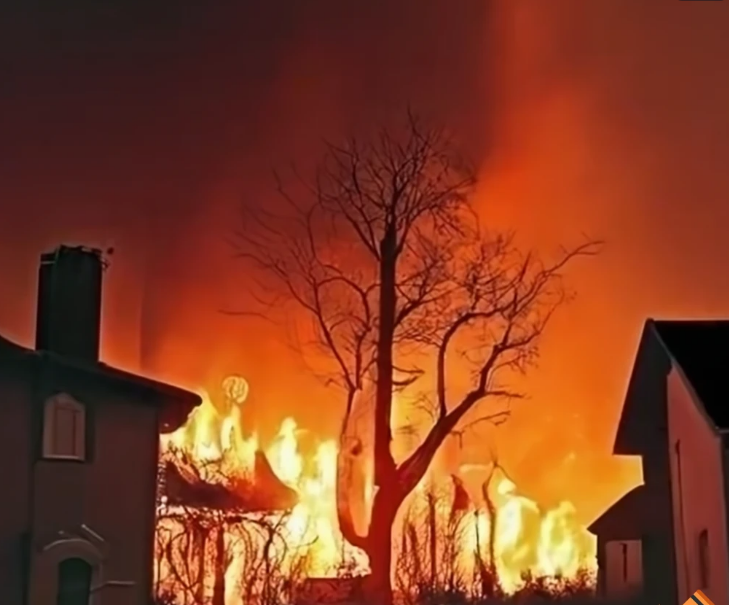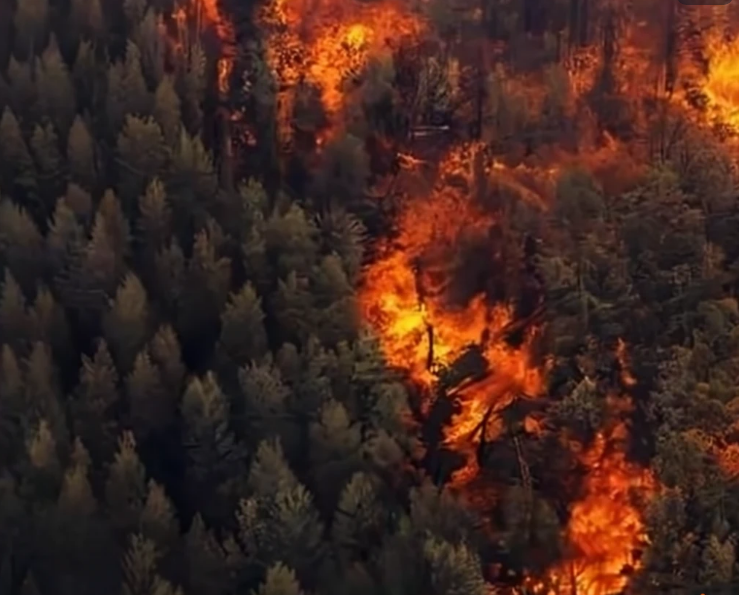<Revolutionizing Fire Prevention in 21st Century Greece>
Written on
In the 21st century, it is unacceptable for a European nation like Greece to suffer from destructive wildfires each summer, especially those that ignite at night. Although effective prevention strategies are available, they remain largely unutilized.

Learning from Portugal's Success Post-2017 Fires
In 2017, Portugal experienced catastrophic wildfires that claimed 66 lives and devastated extensive forest areas. This tragedy catalyzed a comprehensive overhaul of the country's fire management and prevention systems, leading to several key improvements.
#### 1. Overhauling Civil Protection Services
- Formation of the National Authority for Emergency and Civil Protection (ANEPC): This newly established body focuses on fire prevention, oversight, and suppression strategies.

#### 2. Enhancing Forest Protection and Land Management
- Utilization of Controlled Burns: Portugal has ramped up controlled burning to manage forest biomass, effectively reducing fire fuel and establishing natural barriers.
- Comprehensive Forest Management: Increased efforts to clear dead trees and restore ecosystems have made forests less fire-prone.
#### 3. Implementing Advanced Technology for Monitoring and Prevention
- Satellite Monitoring: Enhanced satellite systems facilitate early fire detection, expediting response efforts.
- Drones: These devices are employed for surveillance and fire detection in remote areas.
#### 4. Strengthening Fire Brigade Training and Resources
- Enhanced Training: Firefighters and emergency responders receive improved training that incorporates new technologies and inter-agency cooperation.
- Increased Personnel and Equipment: The recruitment of additional firefighters and upgrading of equipment have led to specialized teams for managing large wildfires.
#### 5. Enforcing Stricter Regulations and Legislation
- New Land Management Laws: Regulations mandating regular deforestation around settlements and infrastructure have been enacted, with heavy fines for non-compliance.
Positive Outcomes and Progress
The changes implemented in Portugal have yielded remarkable results:
- Decline in Burnt Areas: From 2017 to 2021, the area affected by fires decreased by about 60%. In 2017, over 500,000 acres burned, while in 2020 this number fell to approximately 200,000 acres.
- Decrease in Casualties: Fire-related fatalities have substantially declined, with minimal loss of life in subsequent years.
- Improved Response Times: Agencies now respond more swiftly and effectively, with new technologies aiding in quicker detection and coordination.
- Global Recognition: Portugal's advancements in fire management have drawn international praise, presenting its model as a benchmark for other European nations.
Through a combination of technology and structural reforms, Portugal has significantly bolstered its fire prevention and suppression capabilities, safeguarding both its citizens and the environment.

Global Leaders in Modern Fire Prevention
Various countries have adopted the contemporary fire prevention methods outlined above. Here are examples of nations effectively employing these technologies:
#### Australia
- Technology: Utilizes satellites, sensors, and drones to monitor forests, alongside AI predictive models for risk assessment.
- Effectiveness: Despite severe wildfires, Australia has managed to mitigate their spread and severity, though challenges remain due to droughts and extreme temperatures.
#### United States
- Technology: Early warning systems using sensors, drones, and satellite monitoring are implemented, particularly in wildfire-prone states like California.
- Effectiveness: Adoption of new technologies has enhanced response times, resulting in reduced acreage burned and fewer fatalities.
#### Spain
- Technology: Employs early warning systems, controlled burns, and specialized firefighting units utilizing drones.
- Effectiveness: Spain has successfully diminished the frequency and impact of wildfires through these proactive measures.
#### Canada
- Technology: Uses satellite systems, drones, and advanced predictive models to manage fires in remote regions.
- Effectiveness: Canada has improved its wildfire response capabilities significantly, safeguarding vital ecosystems.
These nations illustrate how technology can effectively support fire prevention efforts, although success relies on a multifaceted approach adapted to local contexts.
Modern Fire Prevention Techniques
Fire prevention has seen significant advancements with the adoption of new technologies. Some contemporary methods include:
- Early Warning Systems: Sensors detect smoke, temperature, and humidity in real-time. Satellites monitor forested areas for early fire detection.

- LoRaWAN Networks: These networks transfer data from remote sensors to control centers cost-effectively.

- Artificial Intelligence and Machine Learning: AI analyzes data to predict fire risks based on various environmental factors.
- Drones and Robots: Drones monitor hard-to-reach areas with thermal cameras, while some robots are designed to extinguish small fires.
- Controlled Burns: This technique effectively reduces combustible material by creating firebreaks.
Evaluating Effectiveness
- Sensors and Satellites: Highly effective for early detection, but coverage must be strategically planned.
- AI and ML: Constantly improving, they enhance predictive capabilities over time.
- Drones and Robots: Effective for monitoring and firefighting, with potential for future development.
- Controlled Burns: Require careful management to avoid loss of control.
The combined use of these methods can substantially enhance fire prevention and management, leading to fewer incidents and less severe consequences.
Implementation Costs in Greece
The expenses associated with modern fire prevention technologies in Greece can vary widely based on project scale and technology choice. Key cost factors include:
#### Early Warning Systems
- Sensors and LoRaWAN Networks: Initial costs for sensors range from €100 to €500 each, with comprehensive network setups costing thousands to tens of thousands of euros.
- Satellite Services: Access to satellite data can cost thousands annually, with free options available but with limitations.
#### AI and Machine Learning
- Model Development: Costs for AI/ML models range from tens of thousands for basic systems to hundreds of thousands for comprehensive, continuously updated platforms.
- Data Processing: Additional costs may arise from data purchases or specialized processing services.
#### Drones and Robots
- Drones: Purchasing drones with advanced features can cost between €5,000 and €50,000, plus training and maintenance expenses.
- Robots: Firefighting robots can range from hundreds of thousands to over a million euros.
#### Controlled Solutions
- Organization and Supervision: Prescribed burns can be cost-effective, typically requiring thousands per campaign.
Total Cost Assessment
For a widespread implementation, total costs could reach several hundred million euros, considering the need for extensive coverage, diverse technologies, and ongoing maintenance. However, these investments could be economically advantageous, minimizing fire-related losses and saving significant resources in the long run.
Innovative Fire Prevention Strategies
To further enhance fire prevention efforts, creativity can lead to the development of unconventional methods. Here are some groundbreaking ideas:
- Autonomous Ground Robots: These could patrol forest areas, detecting early signs of fires with thermal imaging.
- Biotechnology: Genetically modified plants that resist fires could be developed.
- Space-based Sensors: Satellites equipped to detect smoke and temperature changes could revolutionize fire monitoring.
- Interactive Sprinkler Systems: Automated systems could activate in response to rising temperatures or smoke.
By leveraging the latest technologies and integrating innovative strategies, we can significantly enhance fire prevention efforts. Collaboration at community and governmental levels is essential for effective implementation.
As we navigate the challenges of fire prevention, the urgency for action is clear. The potential for innovative solutions is vast, and with the right political will and community engagement, Greece can protect its landscapes and citizens against the threat of wildfires.